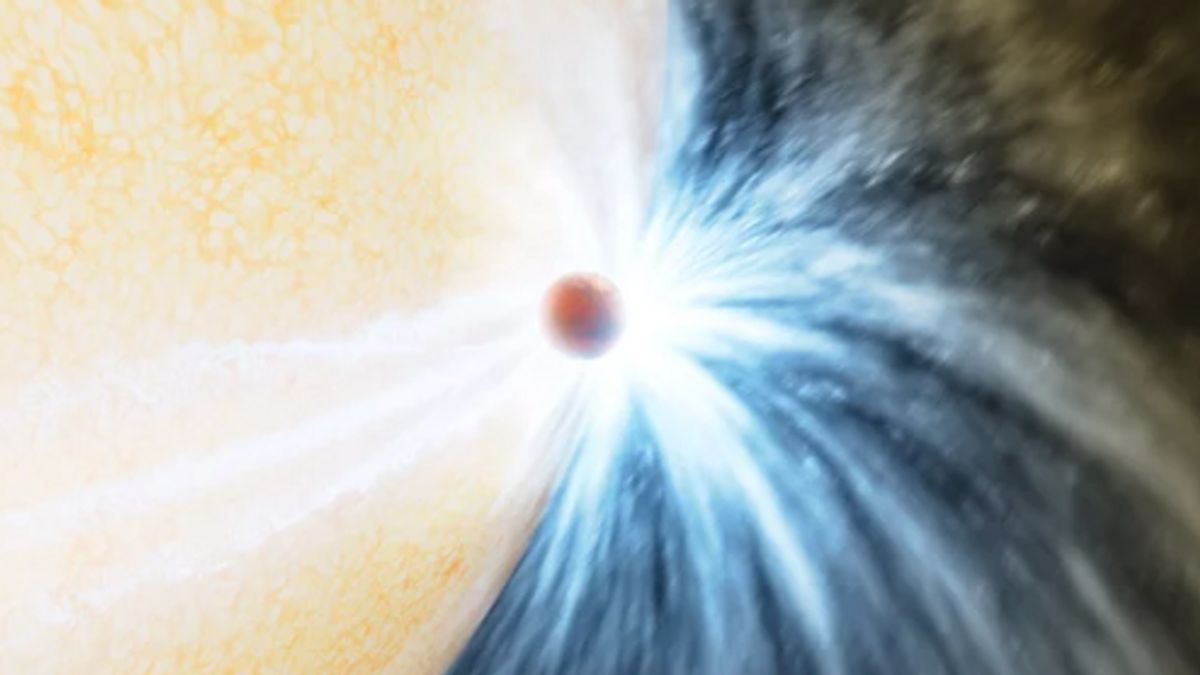JAKARTA - Surprisingly astronomers managed to capture a Sun-like star that devoured the entire planet. As far as 12,000 light years from Earth, it also swallowed a hot gas giant the size of Jupiter.
Scientists have long known older stars and as they get older, they will eventually swallow orbiting inner planets.
The star was first spotted by the Zwicky Transient Facility (ZTF), run at the Palomar Observatory Caltech in California, United States (US). Tasked with scanning the sky every night for stars whose brightness changes rapidly, whose pattern could be a signature of supernovae, gamma-ray bursts, and other stellar phenomena.
No doubt, he was dubbed the star of ZTF SLRN-2020. The ZTF observations show the star became bright and began to fade in about a week.
Lead author of a new study of the findings, Kistalay De initially thought this variable star might result from a nova explosion, occurring when a dead star called a white dwarf stole material from its companion star.
"We are looking at the final stages of the swallowing process," said De, quoted from an official release, Thursday, May 4.
However, further observations with the WM Keck Observatory aboard Maunakea in Hawaii revealed something else is going on. The Keck telescope performs measurements of stellar light spectroscopy, which scientists can use to distinguish the chemical composition of the star.
But what De found is even more confusing. While most binaries emit star material such as hydrogen and helium as one star erodes the other, new sources do not release the two. On the contrary, what De saw were signs of strange molecules that could only exist at very cold temperatures.
These molecules can only be seen in very cold stars. And when a star shines, it usually gets hotter. So, low temperatures and bright stars can't walk at the same time. Fun coincidence," said De.
De and his colleagues then obtained infrared data from cameras on the Palomar's Hale Telescope called the Wide-field Infrared Camera (WIRC).
The observations show the star is getting brighter over time not only in optical light as ZTF observed but also in infrared light, indicating dust.
One source brightened by a factor of 100 for a week, but also produced molecules that only exist at cold temperatures. This means that the source is unlikely in the form of a binary system, where two stars orbit and eat each other.
This data shows that the star may have joined other stars rather than being bright as a result of a supernova explosion.
"The temperature is low and bright stars cannot run at the same time," said De.
Scientists then turned to NASA's NEOWISE space telescope to look for more clues. From the data collected, they estimate the total amount of energy released by the star since its initial explosion, and it turns out to be very small, about 1/1,000 of the magnitude of the observed star merger in the past.
That means, anything that joins a star must be 1,000 times smaller than any other star we've seen. And it's an encouraging coincidence that Jupiter's mass is about 1/1,000 solar masses. That's when we realized: It's a planet, hitting its star, "explained De.
With the pieces in place, scientists can finally explain the initial explosion. A bright heat flash is likely the last moment of a Jupiter-sized planet being pulled into the atmosphere of a dying stellar balloon.
As the planet falls into the core of the star, the outer layers of the star explode, settling as cold dust for the next year.
"For decades, we were able to see before and beyond. Previously, when the planets were still orbiting very close to the star, and afterwards, when a planet had been swallowed, and the stars were giant in size," said De.
"What we missed was catching a star in action, where you have a planet that experiences this fate for real time. That's what makes this discovery very interesting," he added.
However, De warned a similar fate would befall Earth, although not for another 5 billion years, when the Sun is expected to burn out, and burn planets in the Solar System.
We see the future of Earth. If there are other civilizations that observe us from a distance of 10,000 light years when the sun swallows the Earth, they will see the sun suddenly become bright when releasing some material, then forming dust around it, before returning to its original state, concluded De.
The English, Chinese, Japanese, Arabic, and French versions are automatically generated by the AI. So there may still be inaccuracies in translating, please always see Indonesian as our main language. (system supported by DigitalSiber.id)













